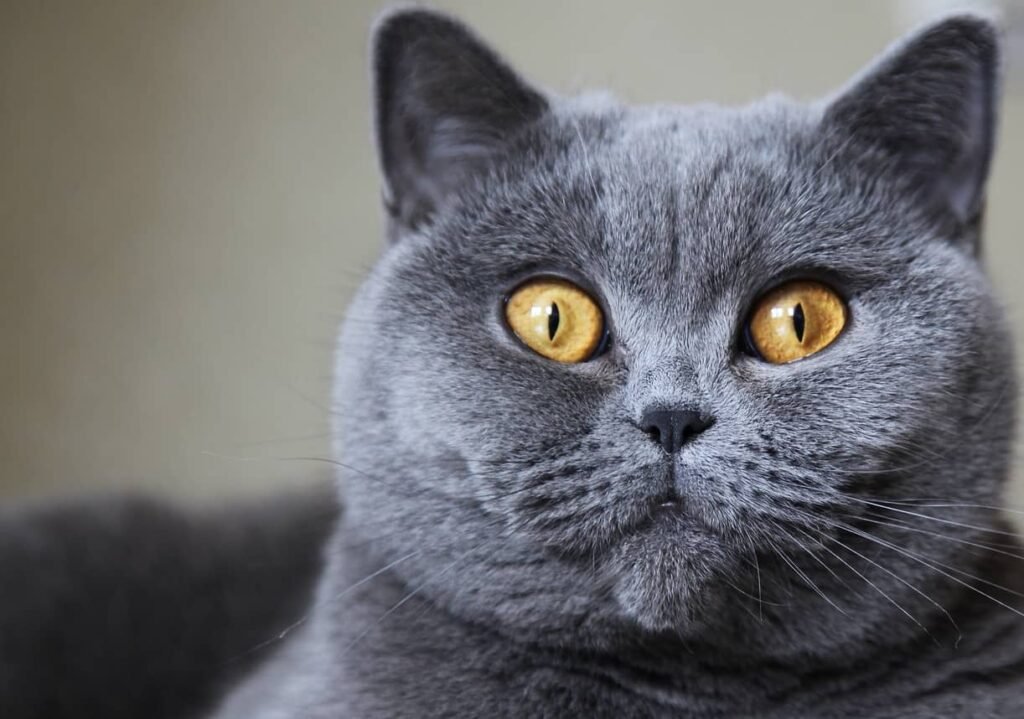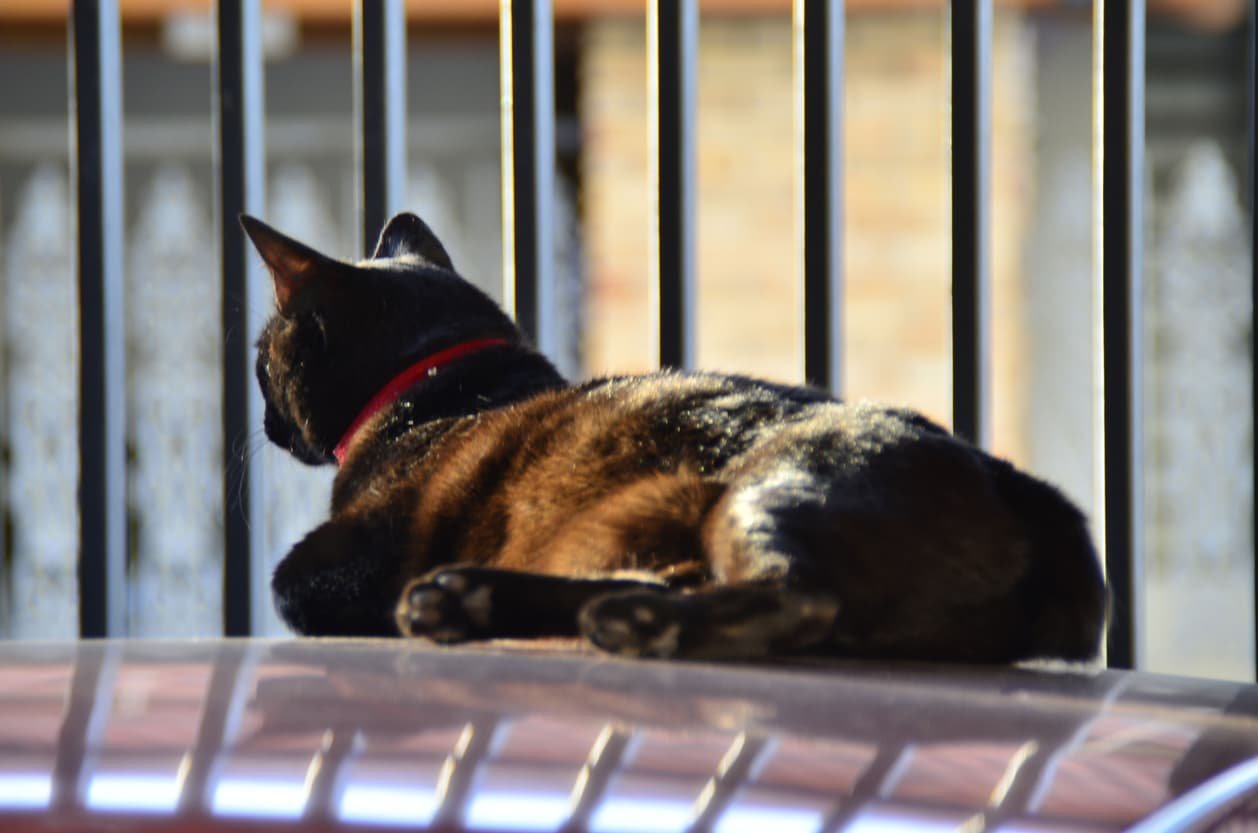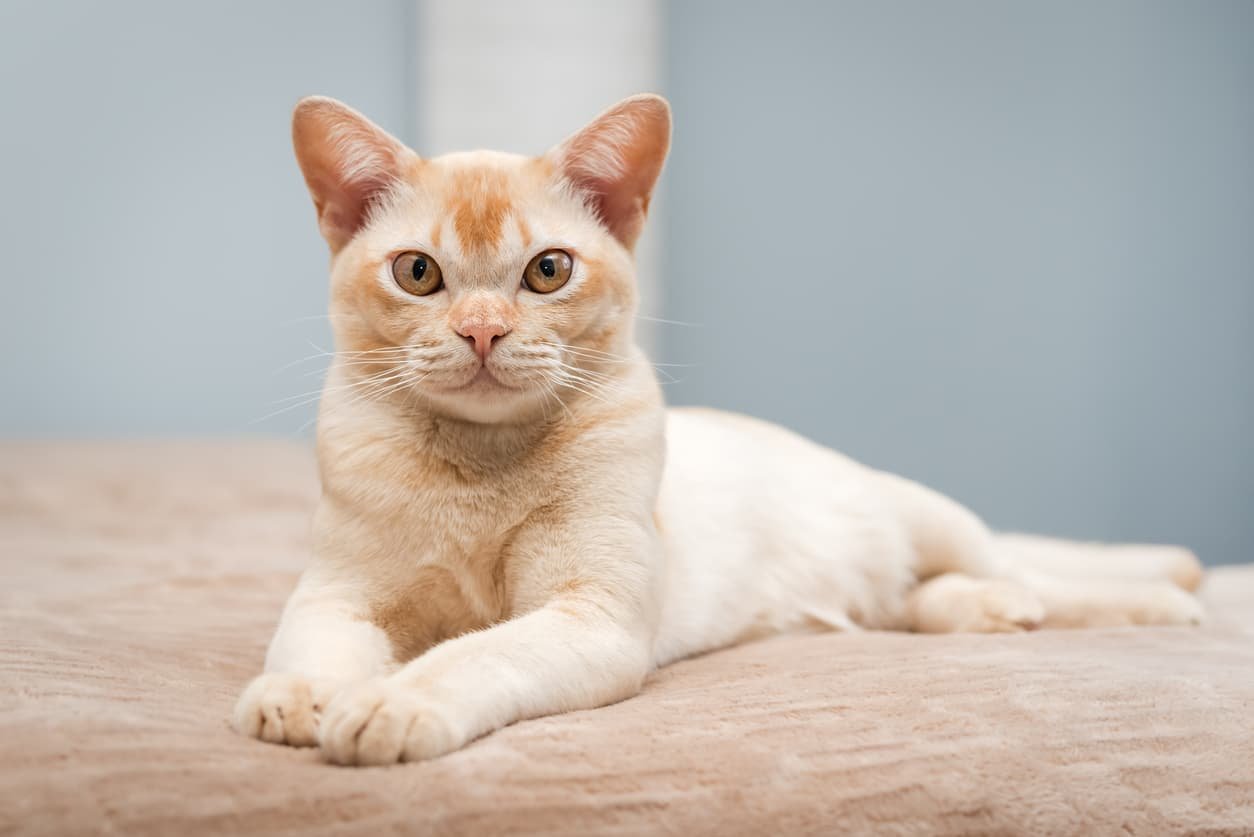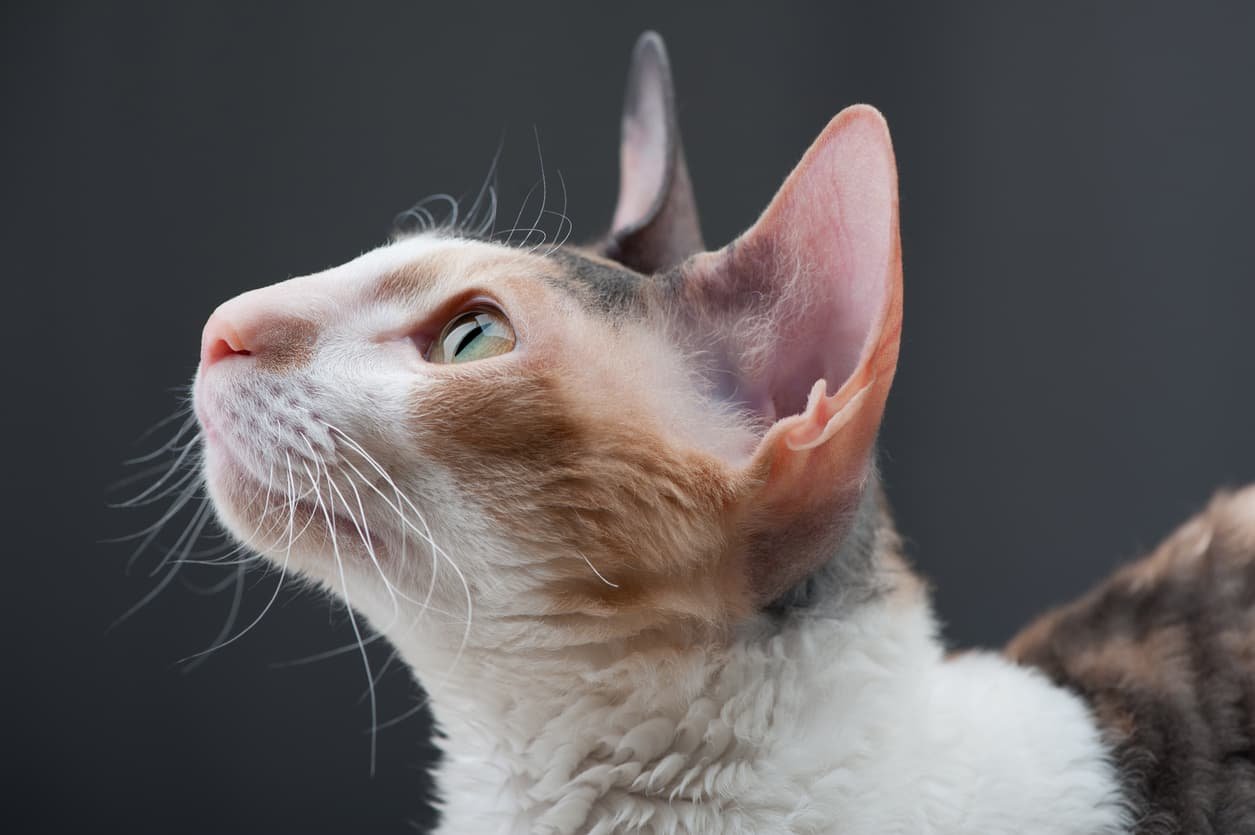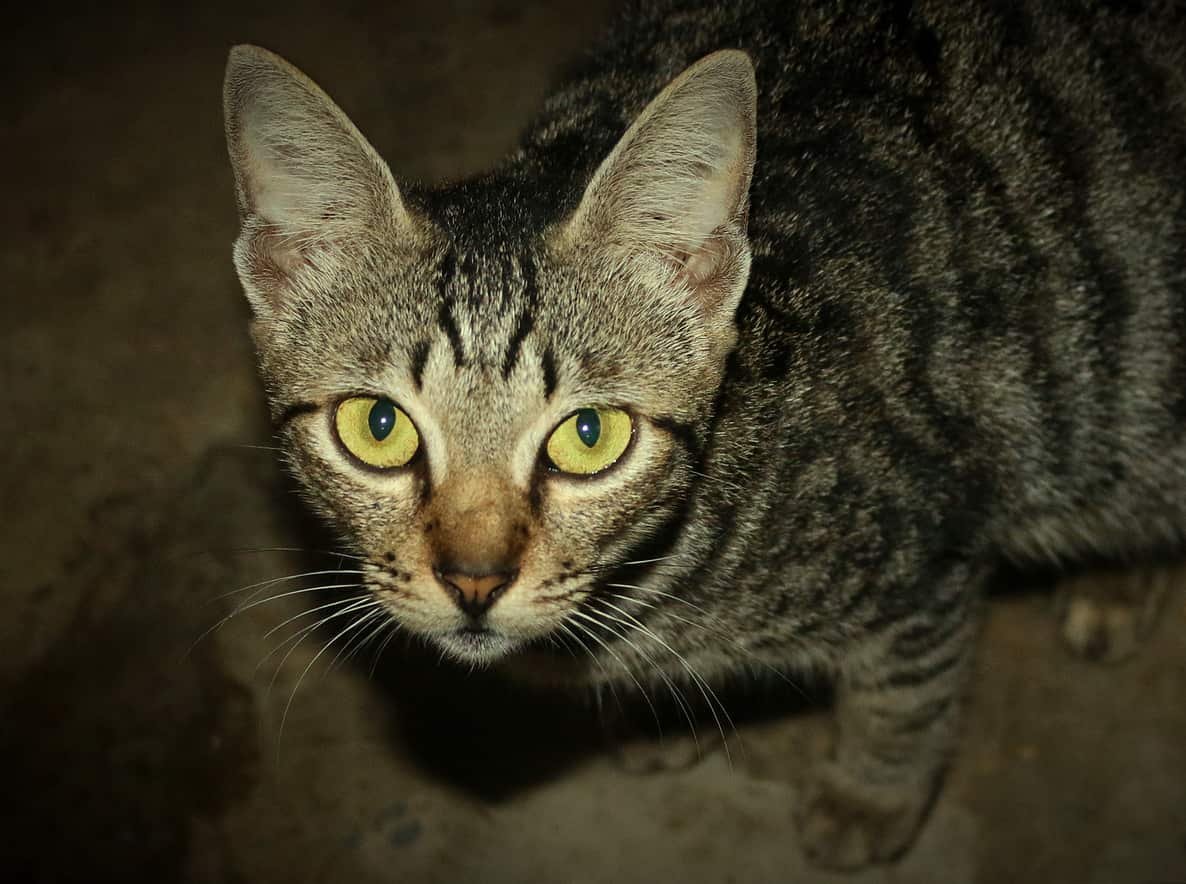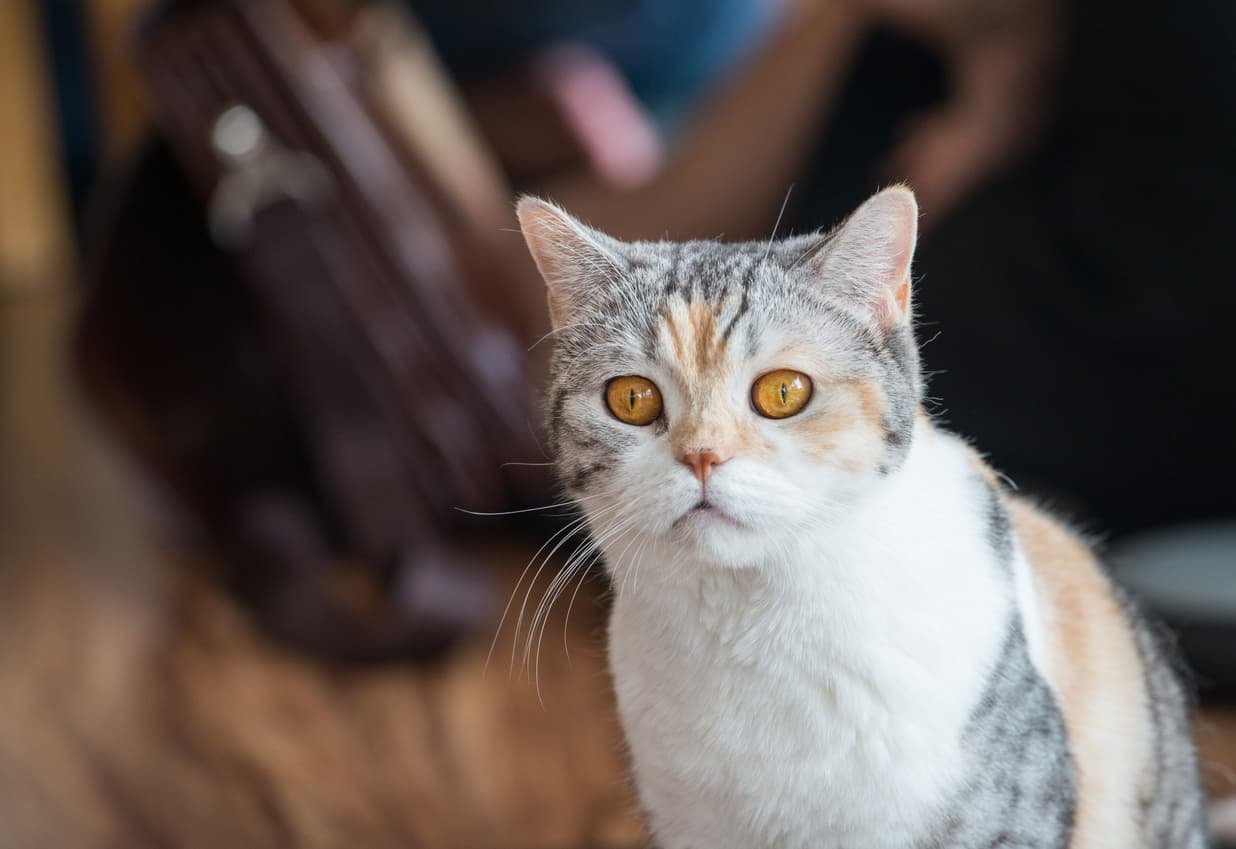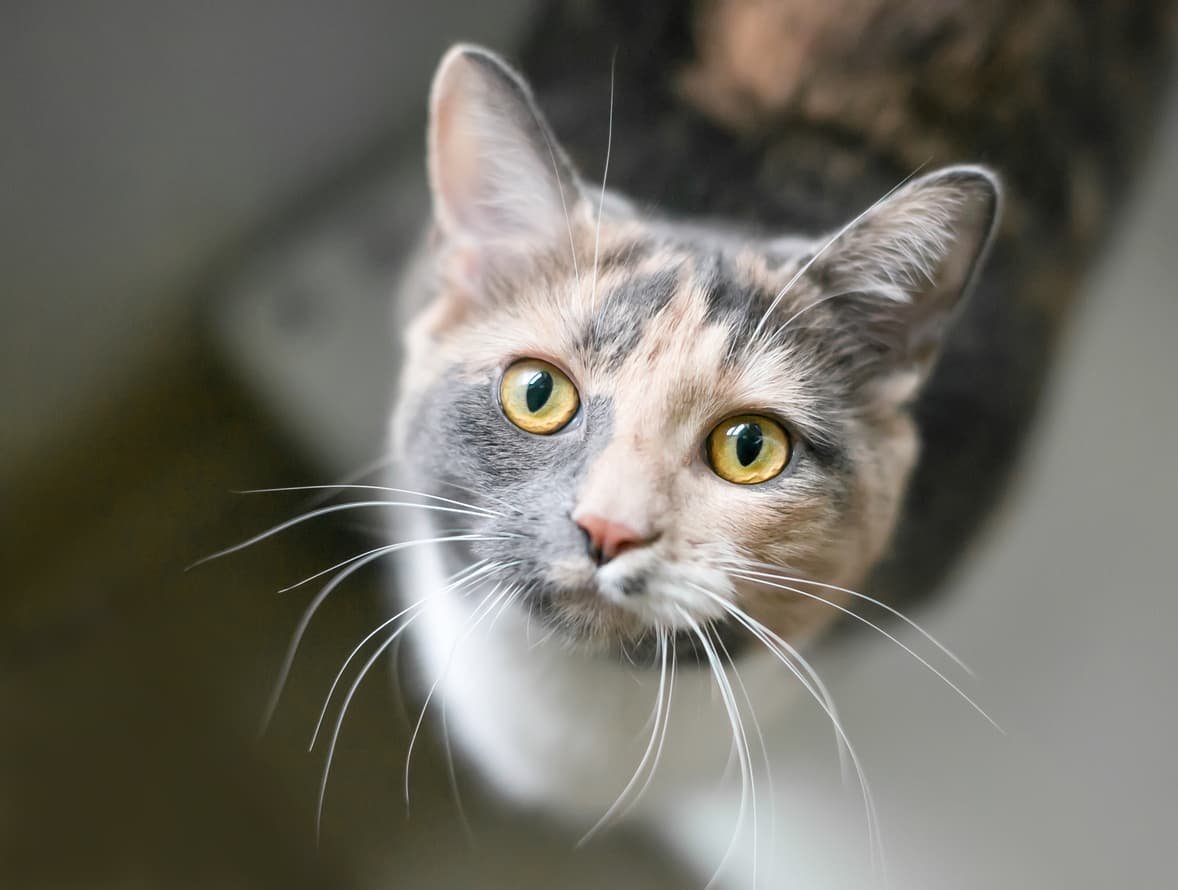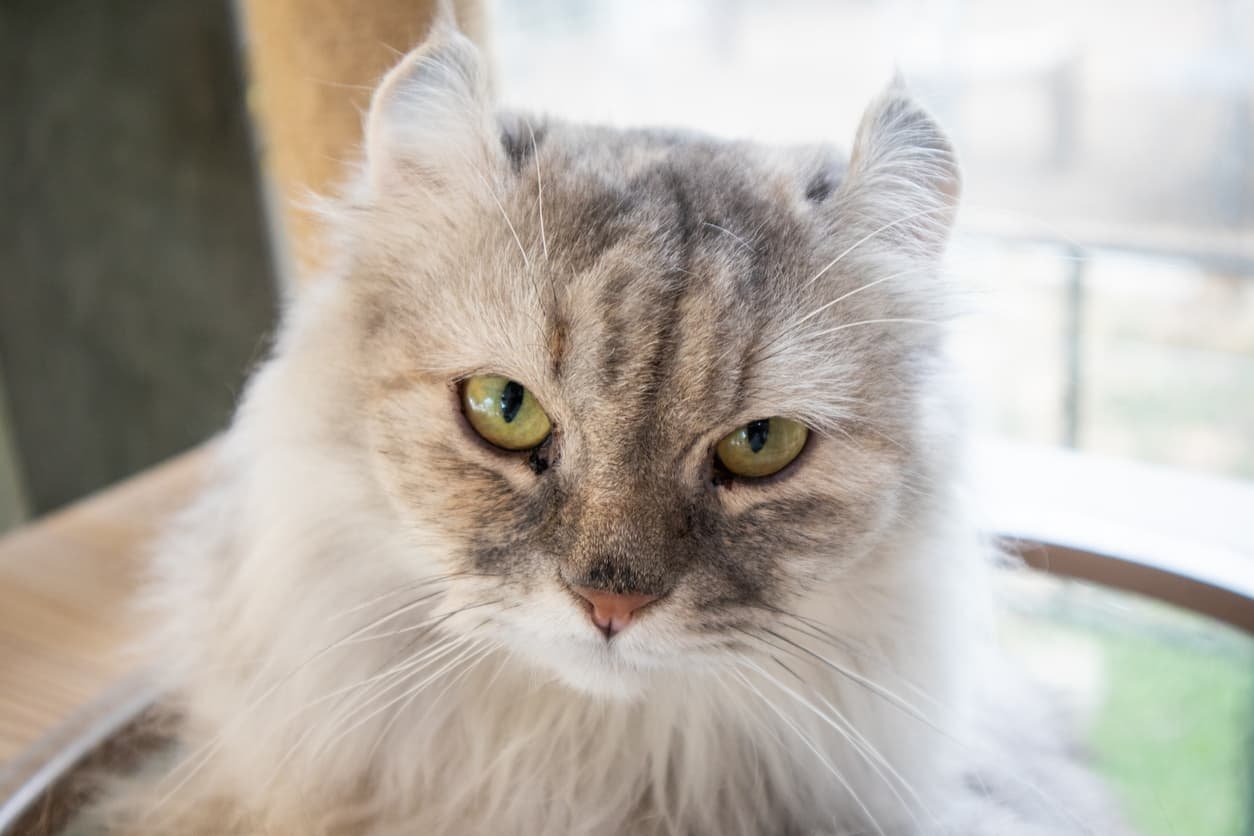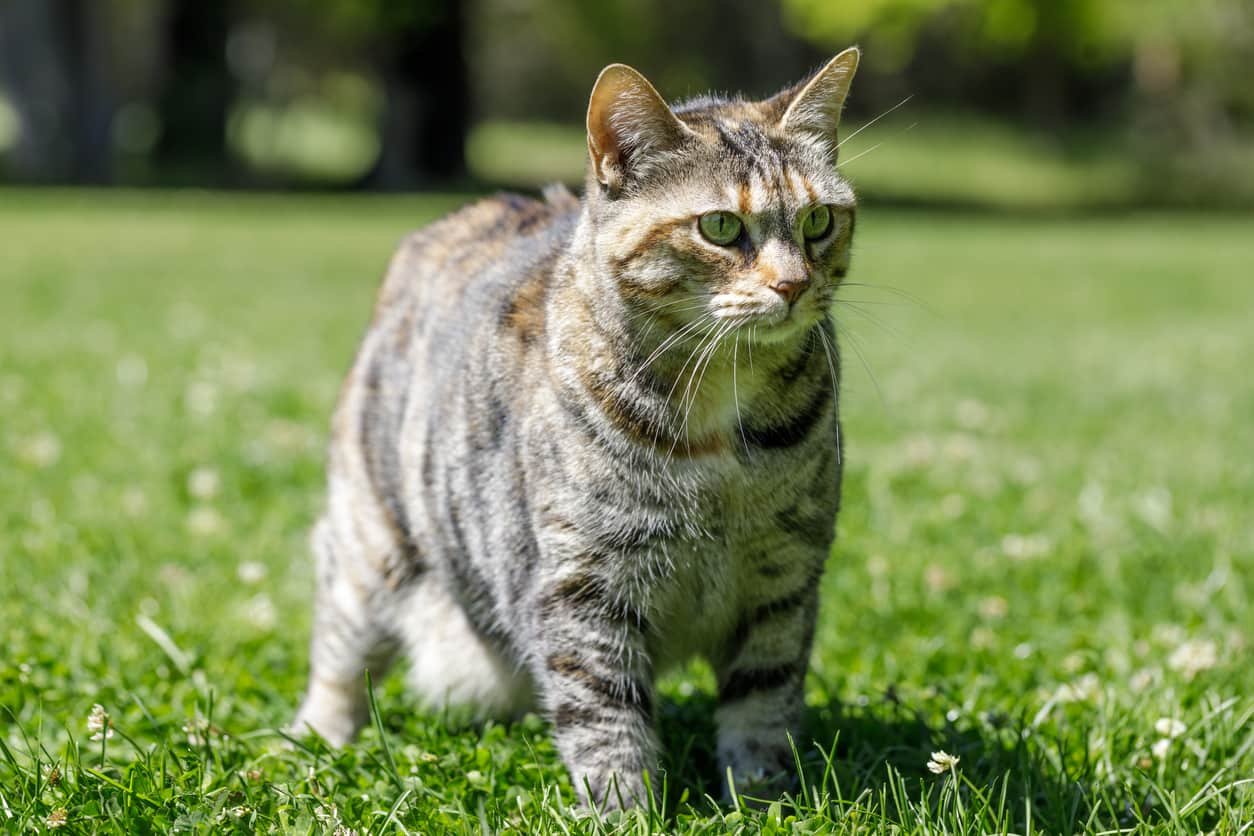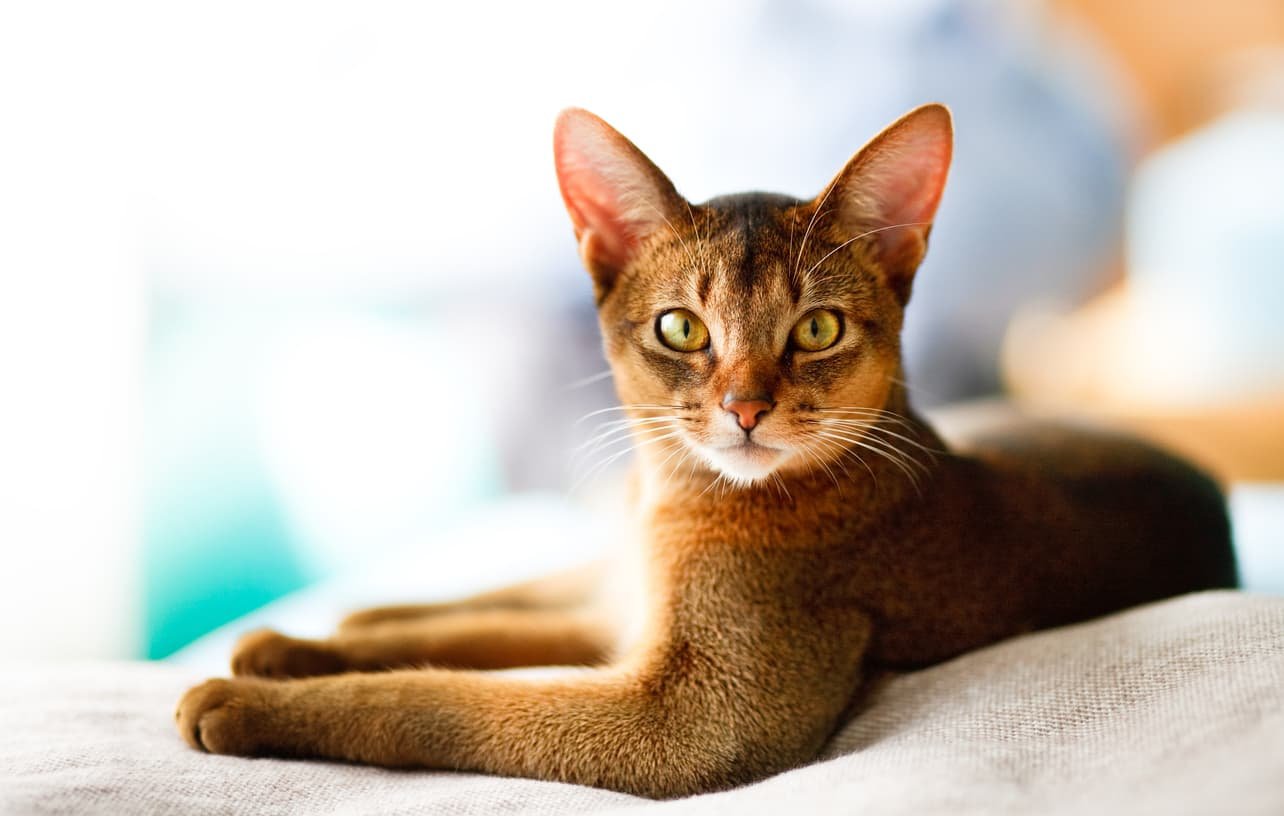Table of Contents
ToggleBritish Shorthair Cat Overview
| Feature | Description |
|---|---|
| Breed Origin | Ancient Rome, later developed in Britain |
| Size | Medium to large, muscular build |
| Weight | Males: 12-17 lbs, Females: 8-12 lbs |
| Lifespan | 12-20 years |
| Coat Type | Short, dense, plush |
| Coat Colors | Blue (most popular), black, white, cream, silver, tabby, and more |
| Eye Color | Copper, gold, blue, green (varies by coat color) |
| Temperament | Calm, affectionate, independent, intelligent |
| Grooming Needs | Low; weekly brushing recommended |
| Activity Level | Moderate; enjoys playtime but not hyperactive |
| Health Concerns | Hypertrophic cardiomyopathy, obesity, dental issues |
| Best For | Families, singles, multi-pet households, apartment living |
Introduction
The British Shorthair cat, with its plush coat and round face, has long been a favorite among cat enthusiasts. Known for their calm demeanor and affectionate nature, these felines make excellent companions for various households. In this article, we’ll delve into the history, characteristics, and care tips for the British Shorthair, and explore the benefits of providing them with a cat tunnel bed.
History of the British Shorthair Cat
The British Shorthair’s origins trace back to ancient Rome, where they were imported from Egypt to control the rat population. These cats adapted to Britain’s cold, wet environment, eventually developing into the breed we know today. Their resilience and adaptability have contributed to their enduring popularity.
British Shorthair CatPhysical Characteristics
British Shorthairs are medium to large-sized cats with a compact, muscular build. They possess a round head, full cheeks, and large, round eyes that exude a charming expression. Their dense, plush coat comes in various colors and patterns. The most familiar colour variant is the “British Blue”.
Temperament and Personality
Renowned for their easygoing and calm nature, British Shorthairs are affectionate without being overly demanding. They are intelligent but not overly curious, making them less likely to get into mischief. These cats are known to get along well with children and other pets, making them ideal family companions.
Health and Lifespan
Generally healthy, British Shorthairs have a lifespan ranging from 12 to 20 years. However, they can be prone to certain genetic conditions, such as hypertrophic cardiomyopathy (a form of heart disease) and obesity. Regular veterinary check-ups and a balanced diet are essential to maintain their health.
Do British Shorthair Cats Have Health Problems?
Yes, British Shorthair cats are generally a healthy and sturdy breed, but like all purebred cats, they can be prone to certain genetic and age-related health conditions. One of the most common health concerns in British Shorthairs is Hypertrophic Cardiomyopathy (HCM), a heart disease that causes the heart walls to thicken, leading to potential heart failure. Regular veterinary check-ups and heart screenings can help detect this condition early.
Another common issue is obesity, as British Shorthairs have a stocky build and a tendency to gain weight if overfed. A balanced diet and regular exercise are essential to maintaining a healthy weight and preventing related conditions like diabetes or joint problems.
They may also be prone to dental issues, such as periodontal disease, due to plaque buildup. Brushing their teeth regularly and providing dental treats can help maintain good oral health. Additionally, some British Shorthairs can develop polycystic kidney disease (PKD), although responsible breeders test for this condition to minimize its occurrence.
Despite these potential health concerns, a well-cared-for British Shorthair can live a long and healthy life of 12–20 years. Regular vet visits, a proper diet, and a loving home environment play a key role in keeping them happy and thriving.
Grooming Needs
Despite their dense coat, British Shorthairs have minimal grooming requirements. Weekly brushing is usually sufficient to remove loose hairs and keep their coat in good condition. During seasonal shedding periods, more frequent brushing may be beneficial.
Do British Shorthairs shed a lot?
British Shorthair cats do shed, but not as much as long-haired breeds. Their dense coat experiences seasonal shedding in spring and fall, requiring weekly brushing to manage loose fur. During peak shedding, increasing brushing to two to three times a week helps reduce hair around the house. A diet rich in Omega-3 and Omega-6 fatty acids promotes a healthier coat and less shedding. Regular grooming strengthens the bond with your cat, but consult a veterinarian if you notice excessive shedding or skin issues.
Feeding and Nutrition
A balanced diet is crucial for the British Shorthair’s health. Due to their propensity for weight gain, it’s important to monitor their food intake and provide a diet rich in high-quality proteins and low in carbohydrates. Consult your veterinarian for personalized feeding recommendations.
Exercise and Play
While British Shorthairs are not overly active, regular play sessions are important to keep them mentally and physically stimulated. Interactive toys and activities can help prevent boredom and promote a healthy weight.
The Benefits of a Cat Tunnel Bed
Providing a cat tunnel bed can offer numerous advantages for your British Shorthair:
Comfort and Security: The enclosed design offers a safe haven where your cat can retreat and relax, reducing stress and anxiety.
Mental Stimulation: The tunnel structure encourages play and exploration, catering to your cat’s natural instincts.
Improved Sleep Quality: The cozy environment promotes better sleep, contributing to your cat’s overall well-being.
Training and Socialization
Early socialization is key to developing a well-adjusted British Shorthair. Expose them to various people, environments, and experiences during kittenhood to foster a confident and friendly demeanor.
Living with a British Shorthair Cat
British Shorthairs adapt well to various living situations, whether in apartments or larger homes. They are generally quiet cats and are content to spend time alone, making them suitable for individuals with busy lifestyles.
Common Misconceptions
Some people believe that British Shorthairs are aloof or unfriendly. In reality, they are affectionate and enjoy human companionship, though they may not be as demanding of attention as some other breeds.
British Shorthair Cat
The British Shorthair cat stands out for its plush appearance and gentle nature. Their round faces and dense coats make them particularly endearing to cat lovers. This breed’s combination of independence and affection makes them a delightful addition to many households.
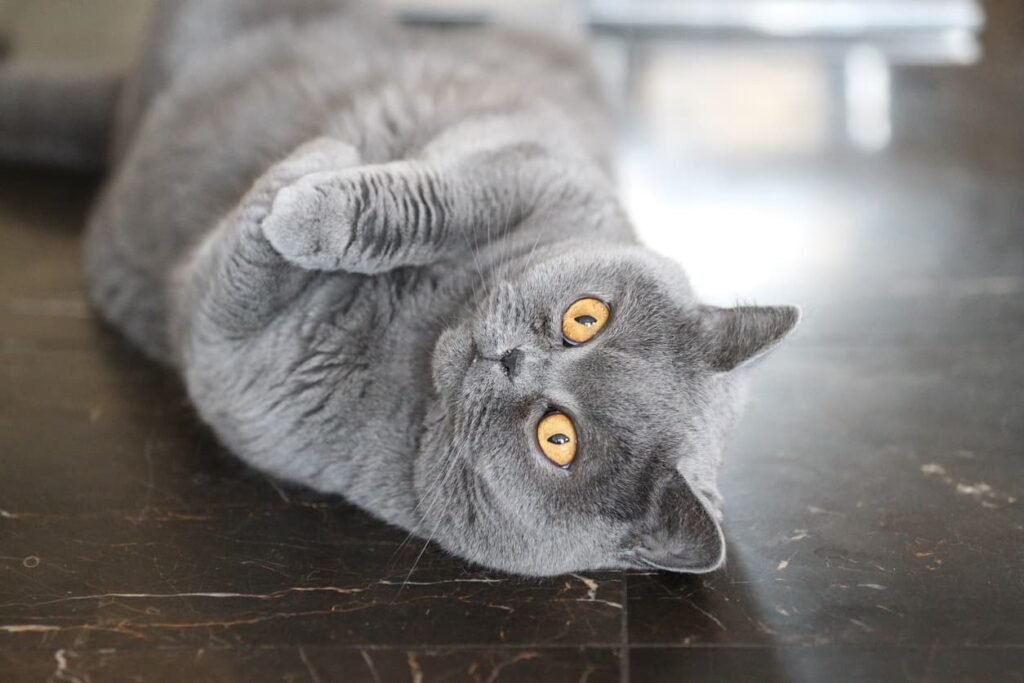
Why Is the British Shorthair So Expensive?
The British Shorthair cat is considered one of the more expensive cat breeds due to several factors, including breeding costs, pedigree, and demand. High-quality British Shorthair kittens from reputable breeders often come with a hefty price tag because ethical breeding requires health screenings, vaccinations, proper nutrition, and time-consuming care. Breeders invest in genetic testing to ensure kittens are free from hereditary diseases, such as (HCM) , which adds to the overall cost.
Additionally, British Shorthairs are a purebred, pedigreed breed recognized by major cat associations like the CFA and TICA , making them more valuable than mixed breeds. Their unique appearance, plush coat, and affectionate personality also contribute to their popularity, driving demand and increasing prices.
Kittens with rare colors such as chocolate, lilac, or cinnamon tend to be even more expensive, as they require specific breeding lines. Furthermore, breeders who follow strict ethical guidelines often charge more than backyard breeders, ensuring you receive a healthy, well-socialized kitten. If you’re looking for a more affordable option, consider adopting a British Shorthair from a rescue or shelter.
Conclusion
The British Shorthair cat is a charming and adaptable breed that brings joy to many households. By understanding their history, characteristics, and care needs, you can provide a loving and enriching environment for your feline friend. Consider investing in a cat tunnel bed to enhance their comfort and well-being, offering them a cozy space to play and rest.
FAQ
Do British Shorthairs Get Along with Other Pets?
Yes, British Shorthairs generally get along well with other pets. They’re calm, easygoing, and not overly territorial, making them great companions for multi-pet households when properly introduced.
Are British Shorthair Cats Affectionate?
Yes, British Shorthair cats are affectionate, but in a calm and independent way. They enjoy being near their humans and receiving gentle attention, though they’re not typically lap cats or overly clingy.
How Long Do British Shorthair Cats Live?
British Shorthair cats typically live 12 to 20 years with proper care. A healthy diet, regular vet checkups, and a stress-free environment contribute to their long lifespan.
Are British Shorthairs High-Maintenance?
No, British Shorthairs are not high-maintenance. They have a dense coat that needs brushing once or twice a week, and their calm, independent nature makes them easy to care for overall.
Do British Shorthair cats like to be cuddled?
British Shorthairs enjoy affection but often prefer sitting beside you rather than being held or cuddled for long. They’re loving and loyal, but usually show it in a calm, reserved way.
How do I know if my cat is British Shorthair?
You might have a British Shorthair if your cat has a round face, chubby cheeks, dense plush coat, and a sturdy, muscular body. Their eyes are large and round—often copper or gold. A vet or genetic test can confirm the breed.
What is the disadvantage of British Shorthair?
A key disadvantage of British Shorthairs is their tendency to gain weight easily due to their low activity level. They may also be less affectionate than some breeds, preferring quiet companionship over constant cuddling.
Why British Shorthair cats don t like to be picked up?
British Shorthair cats often dislike being picked up because they value their independence and prefer all four paws on the ground. Their sturdy build also makes being lifted feel uncomfortable or unnatural to them.
What color British Shorthair is best?
The most iconic and popular British Shorthair color is blue (gray), known for its plush coat and copper eyes. However, they come in many beautiful colors like lilac, cream, black, and bi-color—“best” depends on personal preference!
Are male or female British Shorthairs better?
Both male and female British Shorthairs make wonderful pets. Males are often more laid-back and affectionate, while females can be slightly more independent. The better choice depends on your lifestyle and personality preference.

